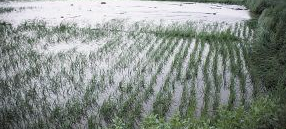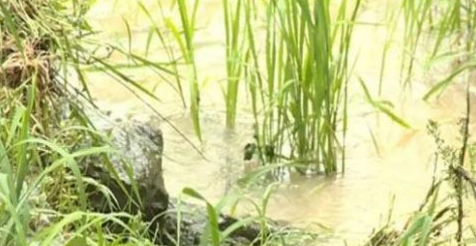After the rainstorm, the temperature rises, which is conducive to the occurrence of a variety of pests and diseases. In particular, rice sheath blight, rice blast and rice bacterial diseases are prone to outbreaks, and the risk of rice planthopper and rice leaf roller is increasing. Therefore, after the water is retreated, measures should be taken immediately to prevent and control the pests and diseases of rice, so as to avoid greater losses caused by pests and diseases after the flood.

After the heavy rain, the flooded field is easily infected by bacterial diseases. It should be drained and nursed in time, and washed during the drainage. Immediately after the washing, the pesticide should be treated once, and 20% of the leaves are 20% or 72% of agricultural streptomycin sulfate 15g is sprayed with 30kg of water to prevent bacterial diseases such as bacterial brown streak and bacterial blight in rice. Strengthen the management of fertilizer and water, adopt measures such as applying fertilizer in the field, spraying plant growth regulator Bibao or Tianfengsu, etc., to enhance the disease resistance of rice and promote the rapid recovery of root growth. All the rice in the first season should be well protected against other diseases and insect pests such as rice blast, sheath blight, rice planthopper, rice leaf roller, rice stem borer and so on.
Control object
Medium rice, one season late rice, double-season late rice paddy field control of stem borer, rice leaf roller, rice planthopper, sheath blight (medium rice and early planting of late rice), rice blast, concurrent treatment of rice straw, rice blast, sticky Insects, rice bran, etc.

Prevention index
In the field of leaf mites, more than 500 cultivars of rice planthoppers, more than 3% of the stalks of rice stalks, more than 10,000 larvae of rice stalks, and more than 30% of stalks of sheath blight.
Control medication
The following formulas are all used in acre, 30 kg spray with water.
Prevention and control of stem borer, rice leaf roller, rice straw, etc.: A34% B. methoxyl (Sino) SC24 ml; B80% killing · Fluoroamide (Taohui) WP50 or 10% Vitamin fluamide (rice) SC30 ml; C10% chlorfenapyr (Long Deng Fu Xianan) SC20 ml + additive Jingdao 10 ml l; D35% chlorantraniliprole (Jia Teng) SC6 ml or 20% Chloramphenicol benzamide (Kangkuan) SC 15 ml (applied 2 days in advance).
Control of rice planthopper: A60% olefinic pyridine ketone (Fei Shining) W grams 12 grams or 80% ene pyridine pymetrozine (long head) W grams 8 grams; B50% pymetrozine W grams (red sun ) 10 g; C25% buprofezin WP 40 g.
Prevention and treatment of sheath blight: A27.8% thiafuryl phenyl ether (Fox) SC 25 ml; B24% thiafuram (swallowing spike) SC 20 ml; C18% benzoyl propionazole (Zhuanggu power) W 40 grams; D12% Jinggang · Brassica (rice Qubike) AS 60 ml.
Control of rice blast: 40% Fuji No. 1 EC 80 ml or 2% Chunremycin (added rice) AS 80 ml or 33% hexaconazole · Indigo ME 80 ml or 25% pyraclostrobin EC 24 ml.
Precautions
The shallow water application in the field is maintained for 3 to 5 days, and the control effect is checked in time. Due to the complicated planting structure and special climate, there are obvious regional differences in the sediment density of the “two-shifted†pests. It is recommended that the agricultural technicians and farmers should go down to the field to prevent local explosion. Disaster.
Fufeng Sinuote Biotechnology Co.,Ltd. , https://www.sinuotebio.com